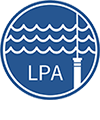During the ArcticNet (Arctic Network) mission in November 2006, sediment cores were collected from 3 fjords of the Labrador coast (Canada). Inuit people in this region depend primarily on the sea and sea ice for their activities, such as hunting and fishing, but also for their traveling. They are concerned by the changes induced in ecosystems by climate change, but also by industrial human activities that can lead to contamination of their food sources.
Various analyzes will be performed on these sedimentary sequences. First or all, physicochemical analyzes will be carried out to determine the nature of the sediments (density, particle size), the variations in the magnetic susceptibility, and the different chemical elements (contaminants). Sub-sampling at intervals of 1 to 2 cm in each sequence will determine the fossil concentrations at different depths of the following two important paleoindicators: 1) Dinoflagellate cysts (dinocysts) which, through a base of Global data from various dinocyst assemblages and transfer functions will allow us to reconstruct the past climate trend via surface water temperature in winter and summer, salinity, ice cover duration, and productivity. 2) Diatoms, from which we can reconstruct changes in the composition of biological communities and thus estimate pelagic and benthic paleoproductivity and paleosalinity.
The Nachvak Fjord, due to its location next to the Torngat Mountains National Park, is still relatively unspoiled. The results of the analyzes of sedimentary sequences taken from this fjord will allow us to establish a reference base for ecosystems of this type in this region, and to verify the impact of global warming.
The sediments of Saglek Fjord have been contaminated with PCBs (PolyChlorinated biphenyls) due to erosion of an adjacent former military site. Now as the littoral source of the contaminant has been removed, it is necessary to develop a long-term monitoring program for Saglek Fiord, based on significant data. It will be interesting to see if there is a return of the ecosystem to the pre-contamination stage as well as to evaluate the changes induced by PCBs in the absence of other contaminants.
The Anaktalak Fiord is extensively used by Inuit people for fishing and traveling. A nickel mining company has recently been established (Voisey’s Bay Nickel Company), which discharges its effluents into the fjord and exploits it as a waterway. The Inuit and the company want to develop a system for ecosystem monitoring and assessment of the state of the fjord.



